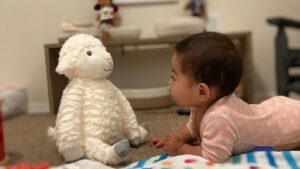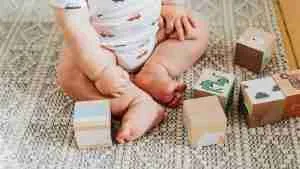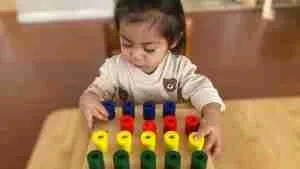
Simple Tips On How To Create A Montessori Room
Turn your nursery into a Montessori bedroom for your infant or toddler.
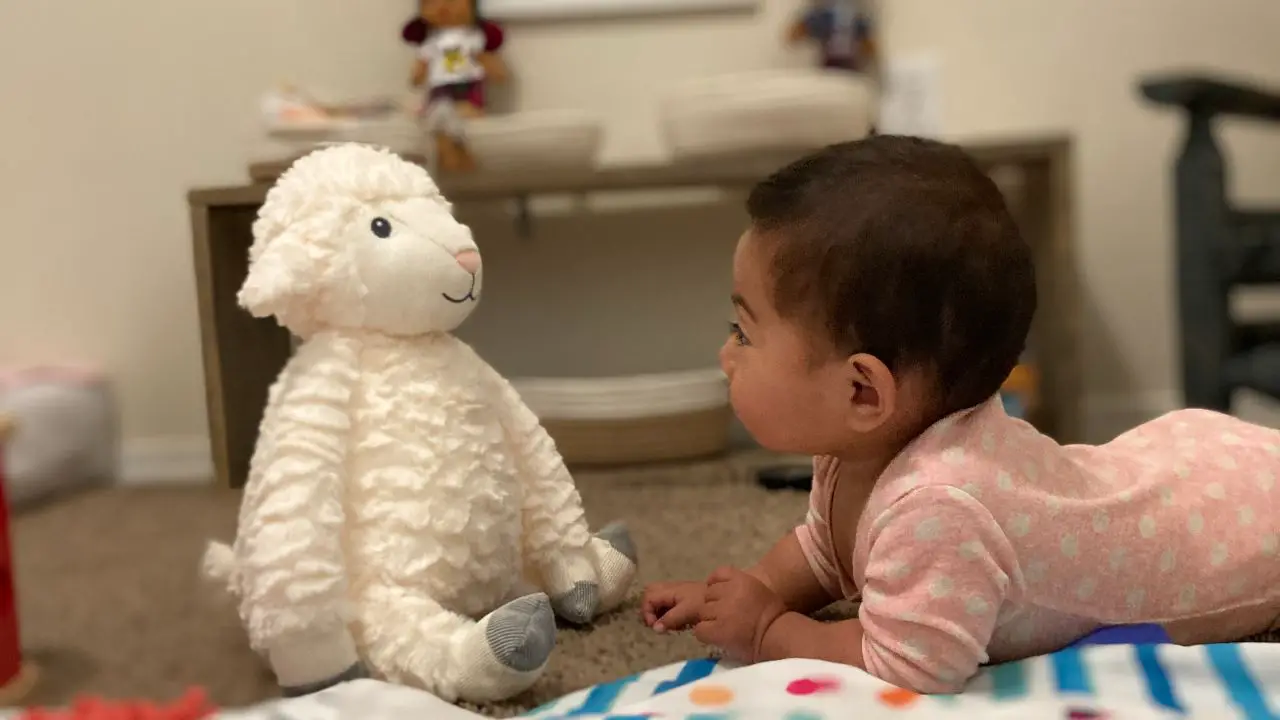
*Disclosure: I only recommend products I would use myself and all opinions expressed here are our own. This post may contain affiliate links that at no additional cost to you, I may earn a small commission. Thank you for your support!
Share this post
A Montessori room is a type of educational environment for young children that emphasizes hands-on learning and exploration. It is designed to support the child’s natural development and encourage independence, creativity, and self-discovery.
This approach to learning is based on the theories of Dr. Maria Montessori, who believed that children have unique abilities to learn and develop through their own experiences and interactions with the world around them.
By creating an infant Montessori room, you can provide your child with a Montessori environment that nurtures their growth and development in a supportive and engaging way.
In this article, you will learn:
- What is a Montessori bedroom.
- Difference between a traditional child's room and a Montessori room.
- What a Montessori bedroom looks like.
- Must-have Montessori room essentials.
- And More!
Here are some Montessori room ideas so you can set up the right Montessori environment for your child. Let’s get started!
What is a Montessori room and how do I set one up?
An infant Montessori room is a special type of educational environment for young children that encourages hands-on learning, exploration, and discovery. It is based on the teachings of Dr. Maria Montessori and aims to support the child’s natural development.
The Montessori method is characterized by the use of specially designed materials and furniture that encourage the child to engage with their environment in a meaningful and hands-on way.
A Montessori room is often set up with different learning areas, such as a practical life area, a sensory area, and a math and language area, all designed to foster the child’s independence, creativity, and self-discovery.
The right Montessori room setup prioritizes child-led learning and exploration, allowing children to take an active role in their own education and development. If you have an infant, I highly suggest you enroll in my online course, Benefits of Play in Infant Development.
Additionally, A Montessori room often has a minimalist design, with clear and simple lines, and neutral colors that allow the child’s focus to remain on the learning materials. The use of natural materials, such as wood and cotton, adds a sense of warmth and comfort to the space.
The Montessori bedroom is designed to be child-sized, with low shelves, tables, and chairs that are accessible to the child, promoting their sense of independence and control. Overall, the Montessori room is a unique and nurturing environment that provides children with opportunities to learn, explore, and grow in a supportive and engaging way.
What is the difference between a traditional child’s room and a Montessori room?
When it comes to creating a safe and nurturing space for a child, there are many options available to parents. However, a Montessori room is a unique type of educational environment that differs from a traditional child’s room in several key ways.
The main goal of a Montessori room is to support the child’s natural development and encourage hands-on learning, exploration, and self-discovery.
One of the key differences between a traditional child’s room and a Montessori room is the design and layout. Montessori rooms are often set up with different learning areas, such as a practical life area, a sensory area, and a math and language area.
These areas are designed to allow the child to engage with their environment in a meaningful and hands-on way. The room is often minimalist, with clear and simple lines, and neutral colors that allow the child’s focus to remain on the learning materials. The use of natural materials, such as wood and cotton, adds a sense of warmth and comfort to the space.
Another difference is the type of furniture and materials used in a Montessori room. Montessori furniture is designed to be child-sized, with low shelves, tables, and chairs that are accessible to the child, promoting their sense of independence and control. The materials used in the Montessori room are also specifically designed to be child-friendly and promote hands-on exploration and discovery.
In contrast, a traditional child’s room may feature more decorative elements and have furniture that is not designed to accommodate the child’s size and needs. The focus may be on creating a visually appealing space rather than an educational environment.
Should toys be in a Montessori room?
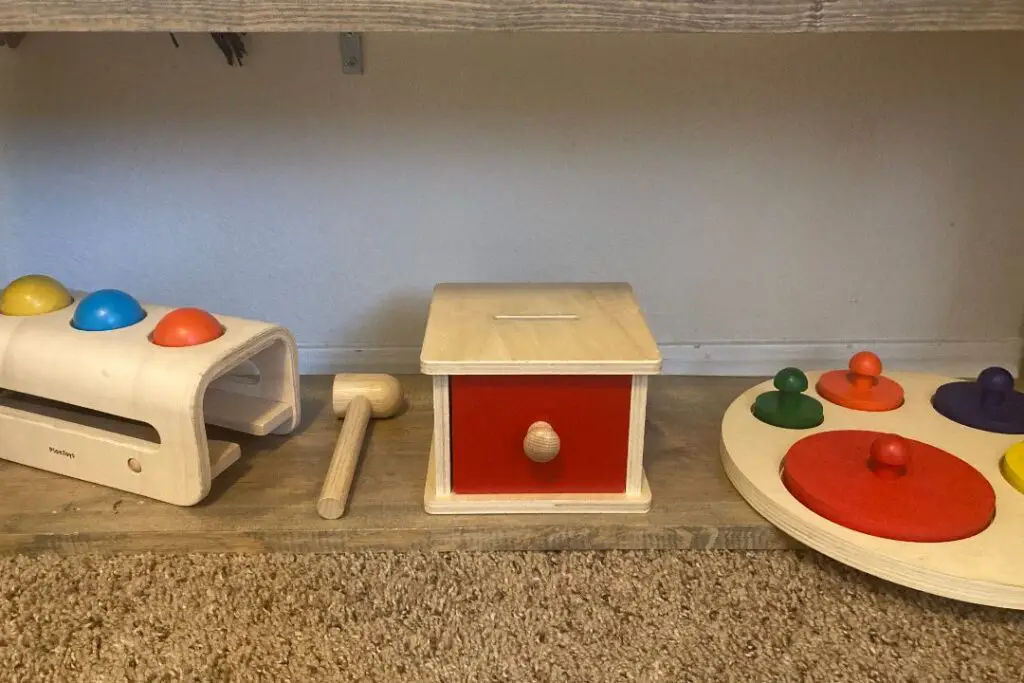
Toys can be present in a Montessori room, but the focus is not on an abundance of toys, but rather on carefully selected, high-quality materials that aid in a child’s development. Montessori rooms prioritize hands-on, self-directed play and exploration, so the toys and materials present should support these goals.
The toys and materials should be safe, durable, and allow for open-ended play and exploration. Additionally, they should be chosen to promote skills such as problem-solving, creativity, and fine motor development.
While toys can be a part of a Montessori room, it’s important to keep in mind that less is often more, as having too many toys can be overwhelming and take away from the focus on the child’s own exploration and discovery.
What does a Montessori bedroom look like?
A Montessori room setup is visually appealing, functional, and supportive of a child’s natural development. A Montessori infant bedroom is typically characterized by minimal furnishings, clean lines, and an emphasis on natural materials.
Montessori bedroom furniture is scaled down to the child’s size and allows for easy access to all items. The floor is usually covered in a soft rug or mat and the room is free of clutter and distractions.
Montessori rooms also include practical life materials like trays, bowls, and containers for organizing, as well as sensory materials like sandpaper letters and texture boards. The goal is to create an environment that promotes independence, self-discovery, and learning through exploration and play.
Montessori bedroom essentials
Having the right items in a Montessori room is crucial because they play a significant role in supporting a child’s development and independence. Montessori materials are carefully selected and designed to stimulate the child’s senses, encourage exploration and discovery, and help them develop essential skills.
The right Montessori materials will also help establish routines and promote organization, which can make the child feel more secure and comfortable in their environment. Additionally, the right Montessori items will foster the child’s natural curiosity and love of learning, and provide opportunities for the child to take control of their own learning and development.
By having the appropriate Montessori items in the room, parents can create an environment that supports their child’s growth and development in a holistic and meaningful way.
- The Montessori bed. This can simply be a mattress on the floor or a small low-lying bedframe with no sides, that allows the baby to easily get in and out of bed and move freely around the room. Read more on the best Montessori floor beds for infants and toddlers.
- A mirror for self-discovery. A mirror is an essential item in a Montessori bedroom because it allows babies to see their own image and develop their sense of self. Babies are naturally curious and fascinated by their own reflection, and this exploration helps them understand and recognize themselves as an individual.
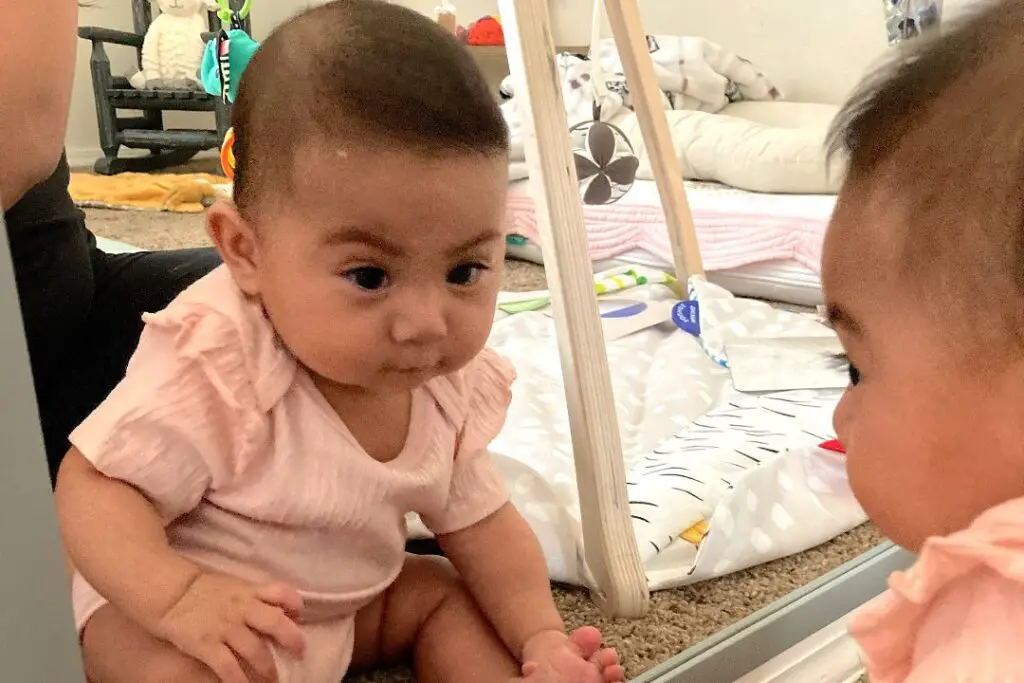
- Baskets or bins for storage. Small baskets help to promote organization and independence. Montessori philosophy emphasizes the importance of order and structure in the child’s environment, and small baskets can provide a simple and practical solution for this.
- Colors and lighting in a Montessori bedroom. Choose neutral, calming colors for the walls and flooring such as light blue, green, yellow or beige. These colors help to create a peaceful and calming environment. Also, aim for natural light, but consider adding additional lighting sources to ensure that the room is well-lit, especially during darker months.
- Montessori materials to aid in your child’s development. Montessori materials are designed to support a child’s natural development and learning through exploration and discovery. Examples include blocks, matching cards, sensorial balls, and puzzles.
- A small Montessori bookshelf. A bookshelf is an important component in a Montessori room as it provides children with access to books and other materials for self-directed learning and exploration.
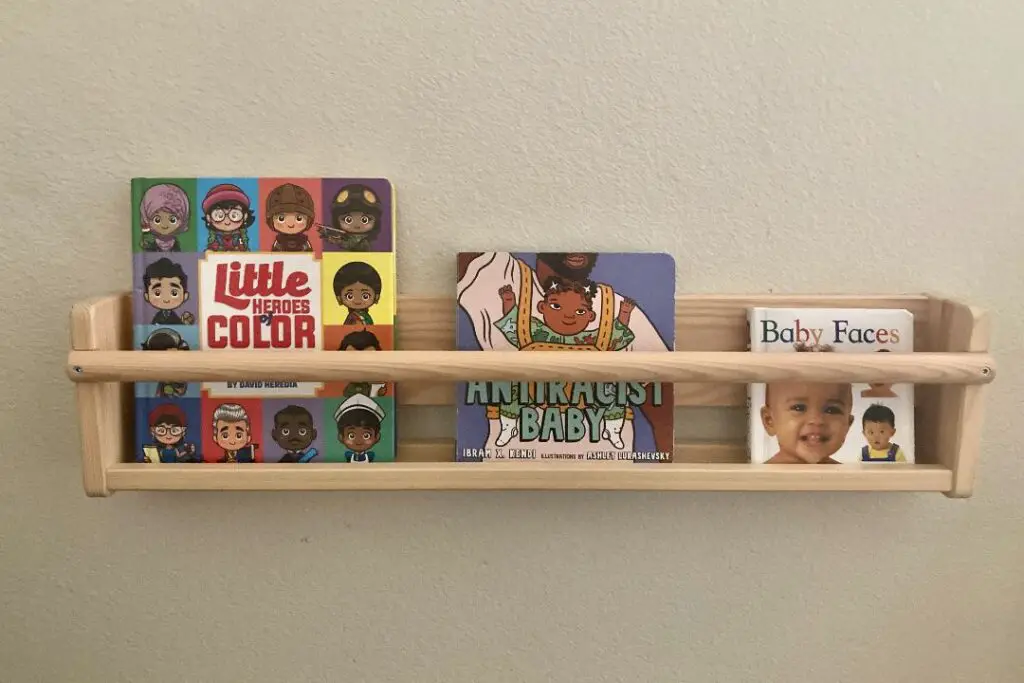
- A changing and dressing area. Having a designated changing area in a Montessori room provides a designated space for getting dressed, allowing for a sense of routine and order in the child’s environment. It also promotes independence because children participate in the process of getting dressed on their own.
- Play and movement area for babies and toddlers. Having a dedicated play area helps to maintain organization in the Montessori room, as toys and materials can be stored and easily accessible in this area. It also provides a safe space for physical activity and exploration. We love the Lovevery Play Gym because it allows for full exploration. You can also get some movement area products I recommend.
- Plants or flowers for natural beauty. Having real plants and flowers in a Montessori room adds a natural and calming element to the environment, provides an opportunity for children to learn about and interact with nature and can aid in the development of gross and fine motor skills, as children can use their hands to water and care for them.
Montessori room FAQs
Why use a Montessori floor bed and not a crib?
A Montessori room is designed to support the child’s independence and freedom of movement. A traditional crib, with its high sides and limited mobility, can restrict the child’s movement and sense of independence. Instead, a floor bed is recommended.
A Montessori floor bed is a low-lying platform bed, usually with no sides or a low railing, that allows the child to easily get in and out of bed and move freely around the room. This type of bed supports the child’s sense of independence and allows them to participate in the life of the household. Floor beds also provide a comfortable and safe sleeping area for the child.
If you are concerned about safety, you can use a low railing or guardrail to prevent the child from falling out of bed, but it’s important to make sure the railing is low enough that the child can easily get in and out of bed independently. The use of a floor bed in a Montessori room is a key element in promoting the child’s sense of independence, freedom, and responsibility.
What are the pros and cons of having a Montessori bedroom for an infant and toddler?
The benefits of setting up a Montessori bedroom are many.
Pros of a Montessori room
- Encourages independence: A Montessori bedroom supports the child’s growing sense of independence, helping them to develop the confidence to make decisions, explore, and learn on their own.
- Supports exploration and discovery: The Montessori approach encourages children to explore and discover through hands-on materials, which can lead to increased learning and problem-solving skills.
- Promotes natural development: By using real-life materials and age-appropriate toys, a Montessori bedroom supports the child’s natural development, rather than trying to control it.
- Creates a comfortable and safe environment: The Montessori approach values simplicity, with a focus on creating a comfortable and safe environment for the child. This can help the child feel secure and at ease.
Cons of having a Montessori bedroom
- Requires careful consideration of materials: To maintain the Montessori approach, it is important to choose materials that are appropriate for the child’s age and developmental stage, and that are safe and non-toxic.
- Can be more expensive: Creating a Montessori bedroom can require a higher investment in materials, especially if you choose to use real-life materials and high-quality Montessori toys.
- May require a change in parenting style: The Montessori approach encourages children to be independent, which may require a change in the way parents approach parenting. This may take some time and effort to adjust to.
Final thoughts on creating a Montessori room for infants and toddlers
Having a Montessori room for a baby can support their growth and development, helping them to become confident, independent, and curious learners. However, it is important to carefully consider the materials used, the cost involved, and the potential changes in parenting style before embarking on this approach.
Now that you know how to create a Montessori bedroom for your baby, go ahead and set the right environment for their development.

Hello, I am Leslie. I am on a mission to help you support the growth and development of your child. With the right tools and proper guidance, you can navigate parenthood with confidence and assertion! My goal is to equip you with knowledge to help you construct a strong foundation for your child’s life.
Suggested articles
You May Also Like
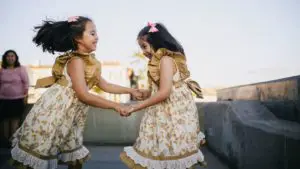
5 Vital Benefits Of Music And Movement Activities In Early Childhood
Music and movement activities are vital in early childhood education, supporting children’s physical, social-emotional, and cognitive development.
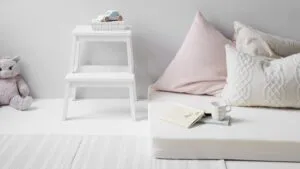
Best Mattress For Montessori Floor Bed: Top 7 Picks
Floor beds are a great option to help your child learn lifelong skills. See our safest floor bed for baby.
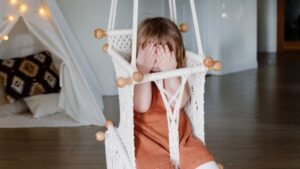
Object Permanence In Psychology: Why Is It Important?
Understanding object permanence in psychology helps children to navigate the world around them and to develop a sense of trust and security in their relationships with others.


